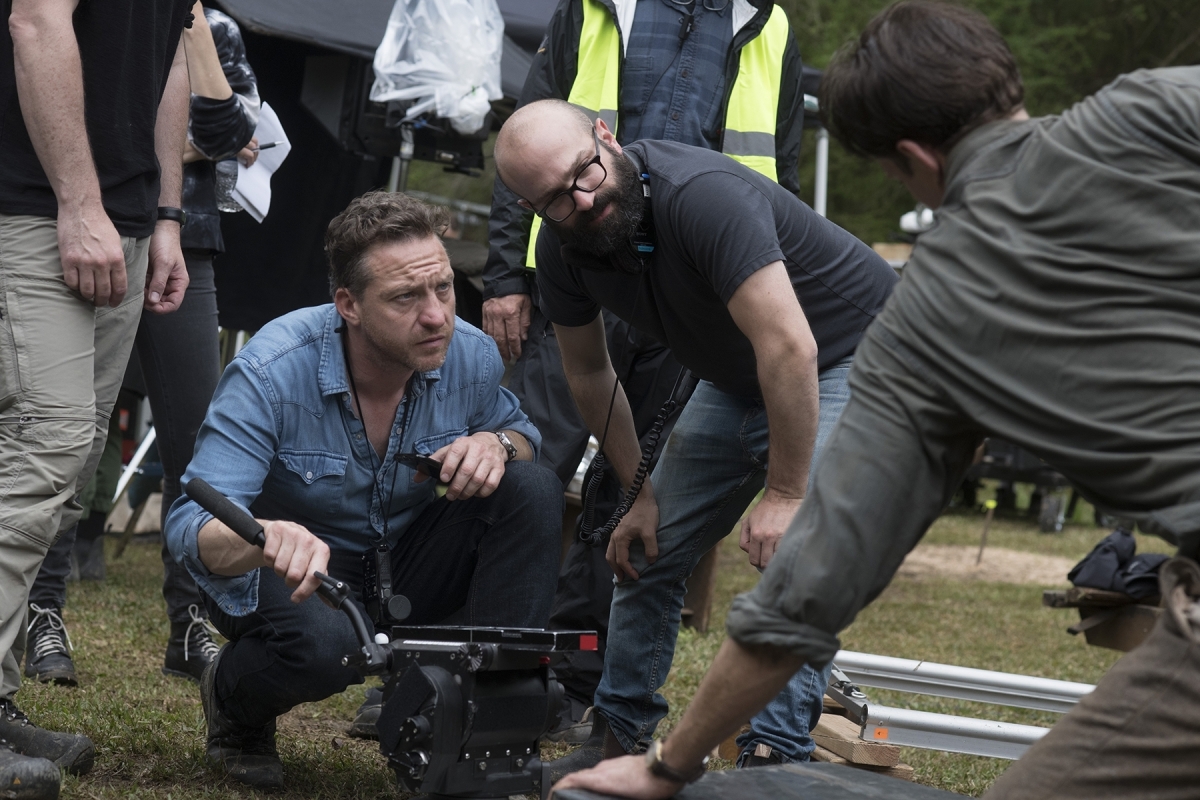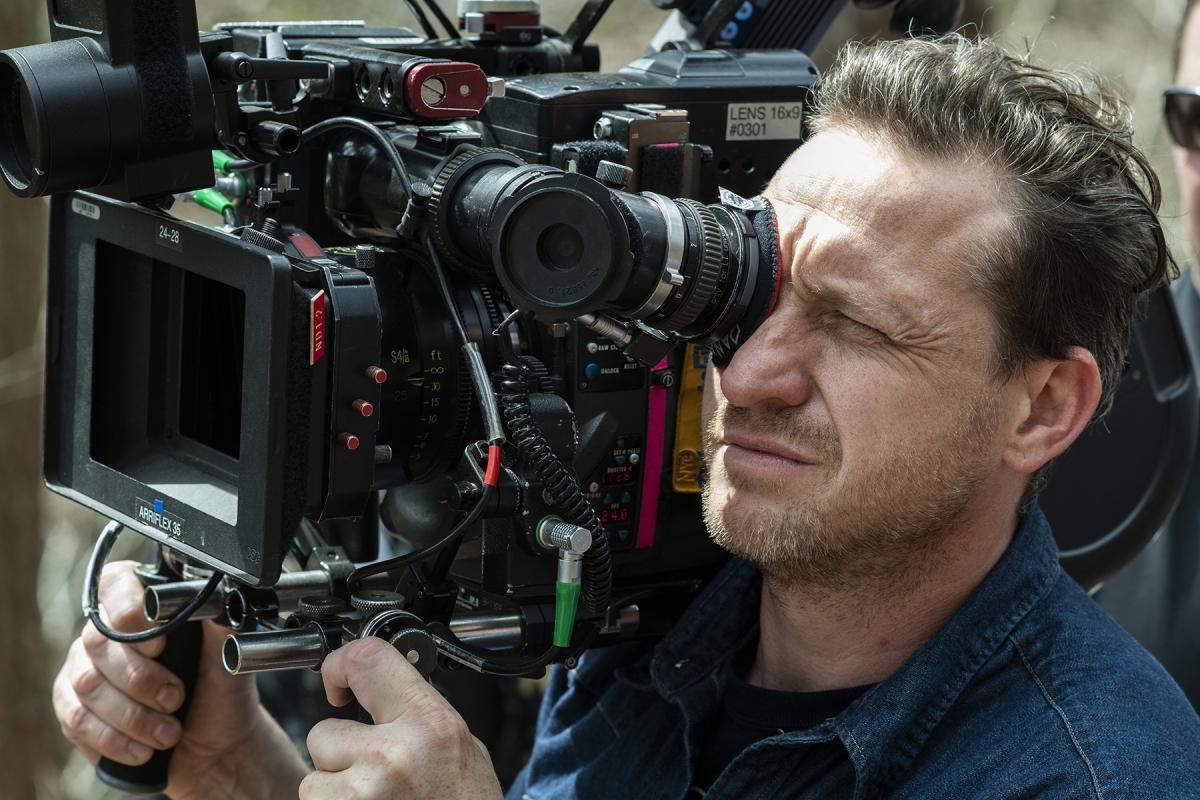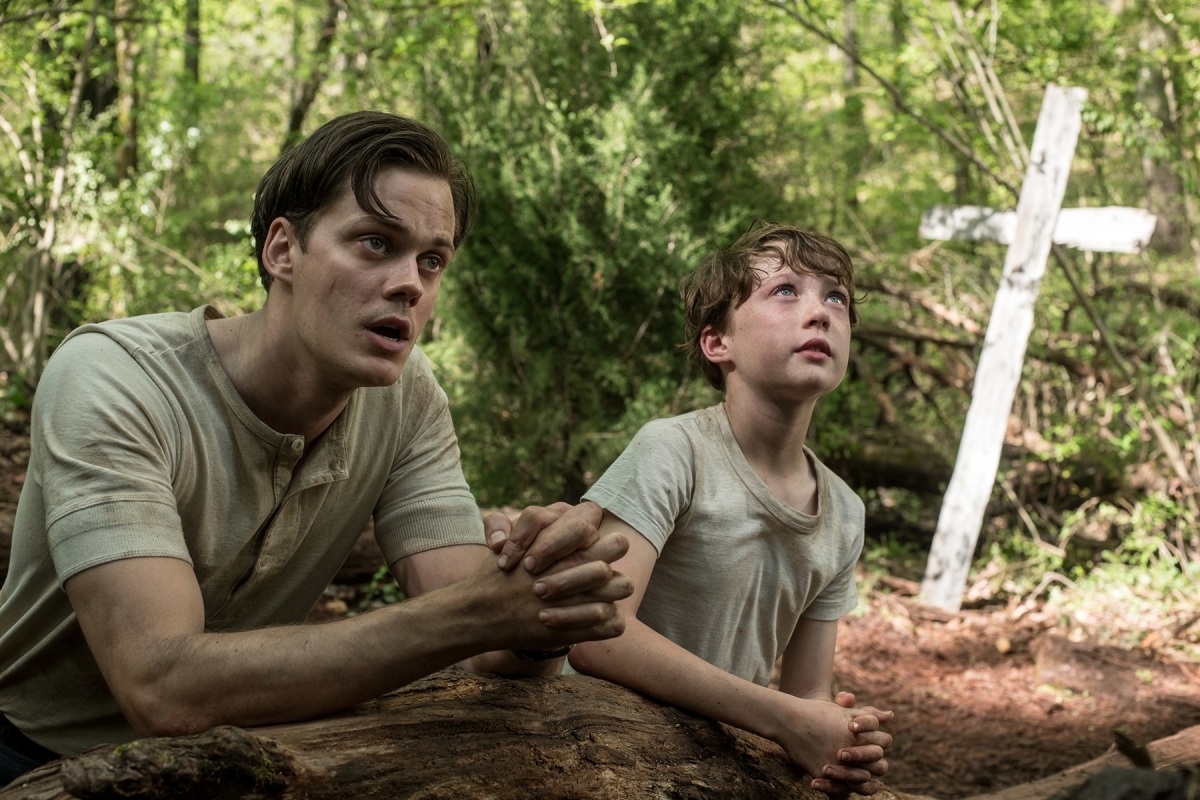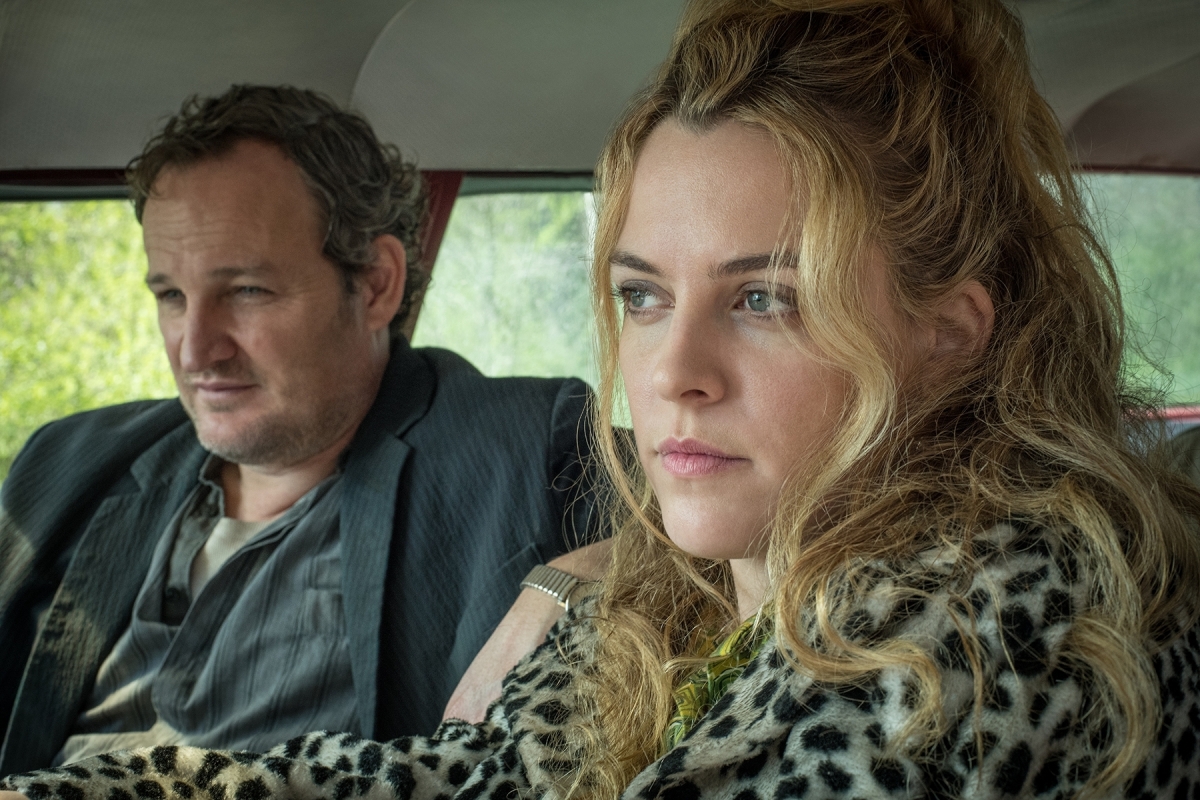Lol Crawley captures the violence of ‘The Devil All the Time’ on Kodak 35mm 3-perf

Tom Holland as Arvin Russell who resorts to violence to protect himself and his family. Photo by Glen Wilson/Netflix © 2020 Netflix, Inc.
Violence permeates throughout the life of Arvin Russell (Tom Holland) causing him to make use of a Luger pistol that once belonged to his father to protect himself and those he loves in The Devil All the Time. The cast of characters include a married couple who are serial killers (Jason Clarke and Riley Keough), a false preacher (Robert Pattinson), a corrupt sheriff (Sebastian Stan) and a traumatized World War II veteran (Bill Skarsgård). American director Antonio Campos (Christine) collaborated with British cinematographer Lol Crawley (Four Lions) on the adaptation of the debut novel by Donald Ray Pollock which streams on Netflix.
“It has been a long time since I’ve shot in the American South which was nice,” states Crawley. “We shot in Alabama. My first film was in Mississippi. It was also great to be reunited with film. It is still the medium that I prefer to shoot over digital. Certainly, for a period film like this it was absolutely the best choice. Every project is different in some ways. I hadn’t worked with Antonio before. It was nice to be able to shoot for him.” Weather was a factor especially with the numerous exterior scenes. "It takes place from the 1940s through to the 1960s so there is a long time frame to cover and also seasonal changes. We show all of those different visual time frames over a short period of time. Then a couple of the scenes are supposed to take place over an hour or two and we shot them over the course of a day, so trying to have that control was one of the biggest challenges.”

Cinematographer Lol Crawley and filmmaker Antonio Campos discuss a shot where Willard Russell (Bill Skarsgård) beats a man to near death. Photo by Glen Wilson/Netflix © 2020 Netflix, Inc.
Campos always intended to shoot on film. “When I came onboard the project, Antonio had spoken to Netflix and it was very much an unchangeable stipulation,” remarks Crawley. “I’m thankful to Netflix for approving that. Even though technically it is proven that the resolution of film versus digital is comparable if not superior in some cases. I still, through experience, feel that film has a quality which isn’t striving to celebrate the hyperreality of the subject. It still has a softer feel. You’re not seeing every individual pore or thread. This desire for higher definition all of the time isn’t something I’m striving for. Certainly, when I’m shooting a period piece it flies in the face of that. What you’re looking for is something that is impressionistic and has more of a texture because it immediately feels of a certain time. That’s not to say that Kodak cannot produce stocks that capture 20/20. Of course, they can. Case in point. I’m shooting a commercial at the moment and trying to make it feel like it was shot in the 1930s and 1940s. All of the time I’m trying to breakdown the definition. I’m trying to get to somewhere that is much more painterly than a celebration of pixel count.”
The footage forThe Devil All the Time was captured on KODAK VISION3 500T Color Negative Film 5219 and KODAK VISION3 250D Color Negative Film 5207. “They are my go-to stocks,” states Crawley. “The movie has a lot of day and night exteriors. For any low-level light work I would use the 500T. The range of stocks that Kodak produces is down to four, but I don’t feel limited by that. 250D is perfect for any exterior work even midday sun. Something I tend to shy away from using is 50D because it is so clean, the grain is so tight. Antonio and I wanted the texture of film and to celebrate that. Actually, we pushed processed by one or two stops a lot of the movie to try to get more of that grain out.” The 35mm three perf film stock was paired with the Arricam LT and Arricam ST cameras. “It was a single camera shoot, but we would get another crew in if we wanted to cross shoot or do two cameras. Because of schedule we had a second unit for the last week, which was a whole independent unit shooting on the same cameras.”

Cinematographer Lol Crawley shot on film in order to create impressionistic and textured imagery that feels of a certain time. Photo by Glen Wilson/Netflix © 2020 Netflix, Inc.
A favorite lens for Crawley is the Cooke S4 with the range going from 18mm to 135mm. “We shot for 2.40:1 aspect ratio, looked at shooting anamorphic initially and ended up shooting spherically. Most of the time we were in 18mm and 40mm.” Gaffer Jerad Molkenthin came up with a creative lighting solution. “Jerad devised an idea where we had large LED torches hung from large cranes above so we could have a big spotlight or soft top light for the nighttime shooting. They were operated at quite a low level to try to be as bold as possible with lighting. For something like this I want to try to be as naturalistic as possible. I’m not frightened to let the shadows go and fall off. We also had ARRIMAX 18Ks, M90s and HMI lamps like that outside. Working in the woods at night and trying to get lamps up there was a big deal. You’re at the mercy of it for a lot of the time. We tried to control when we could but then sometimes you might end up shooting a scene for two hours, and it has been overcast and in the afternoon the sun comes out, and then you’re struggling because you have to commit to one weather condition. When the weather changes you have to try to match as much as you can. The final shootout between Lee Bodecker (Sebastian Stan) and Arvin (Tom Holland) was tricky. I hope that it’s not too jarring, but there are certainly moments where the light fluctuates because of different weather conditions.”

Bill Skarsgård as Willard Russell and Michael Banks Repeta as Arvin Russell (9 Years Old) pay a visit to the prayer log. Photo by Glen Wilson/Netflix © 2020 Netflix, Inc.
Only 10 percent of principal photography took place onstage for the production that was based in Birmingham, Alabama. “It was definitely a process [to find the right locations],” notes Crawley. “Ultimately, we got them. Our production designer Craig Lathrop [The Lighthouse] did a great job in restoring real locations.” Six to eight weeks were spent in preproduction while shooting lasted approximately eight weeks. “There was previs for some of the trickier scenes, but most of the time Antonio and I sat with the script shot listing and would go out to locations. For the prayer log scenes, we did photo storyboards on an iPhone. We approached it that way to see if the language of the film worked.” Inspiration was found in the photography of Dorothea Lange and Robert Frank. “They were documentarians studying rural life across America during the 1940s and 1950s. We also looked at the paintings of Andrew Wyeth for the tones of the color palette. As the film progressed chronologically, William Eggleston was an influence in terms of contrast between the organic natural colors of the rural environment and the extra chromatic colors of the town. Those we were trying to work against each other to show the different time frames and environments.”
Most of the colors were captured in camera. “The film did the heavy lifting,” states Crawley. “For the DI, we had a great colorist named Damien van der Cruyssen [Uncut Gems] at The Mill and Technicolor in New York. We did a lot to get that extra chromatic feel by popping the colors. I was looking at it and realizing how that 1960s and 1970s color photography feed into filmmakers like Wes Anderson. As much as I admire his work, you have to be quite careful because if you go too far down that road it becomes heightened or too stylized or too cartoony. Certainly, for a film like this where you want to celebrate the darkness, tension and drama of a heavy story, if you put too much saturation in, it looks odd with the tone of the film.”

A number of the car shots such as this one with serial killers Sandy Henderson (Riley Keough) and Carl Henderson (Jason Clarke) involved real driving or a process trailer out on location. Photo by Glen Wilson/Netflix © 2020 Netflix, Inc.
A number of the car shots involved real driving or a process trailer out on location. “We were old school in our approach to that,” remarks Crawley. “There was quite a lot of visual effects for clean-up and blood splatter work. We had one scene in the Wooden Spoon Diner early on when Willard Russell [Bill Skarsgård] meets Charlotte Russell [Haley Bennett] that was all greenscreen outside. We did the plates shots for that. That was our biggest greenscreen element.” A pivotal moment has Willard coming across a crucified fellow soldier on a World War II battlefield. “We found an area where they had chopped the trees down and burned the landscape; it was perfect for our scene on the Solomon Islands and was enhanced later with palm trees. The grade gave it a hotter and scorched feel to the landscape.”
Violence is an integral part of the storytelling. “Our approach was not to have pre-emptive camera positions for the violence, so you don’t suddenly cut to this low angle shot to sell the punches,” explains Crawley. “Antonio and I had this idea that the violence should have the same visual language, so it comes out of nowhere and feels real, visceral, and honest.” Key crew members were 1st AC Kali Riley, camera operators Sam Ellison and Erin Henning, 2nd AC Brock Byrd, film loader Will Whittenburg, camera PA Elizabeth Bailey, gaffer Jerad Molkenthin, best boy electric Oren Jones, rigging gaffer Sean Feehan, key grip Mike L. Germaine, best boy grip Earl Perque Jr. and second unit DP Zach Galler. Kodak made significant contributions in particular Michael Brown; Robert Wales, Tony Bifano, John Woodson, and Ben Cooper at Kodak Film Lab Atlanta; and Jeremiah Drueke, David ‘DC’ Cardinali and Ian Macdonald at Kodak Atlanta Post. “The biggest challenge was to hold that continuity of lighting throughout. I’m proud of the entire project.”